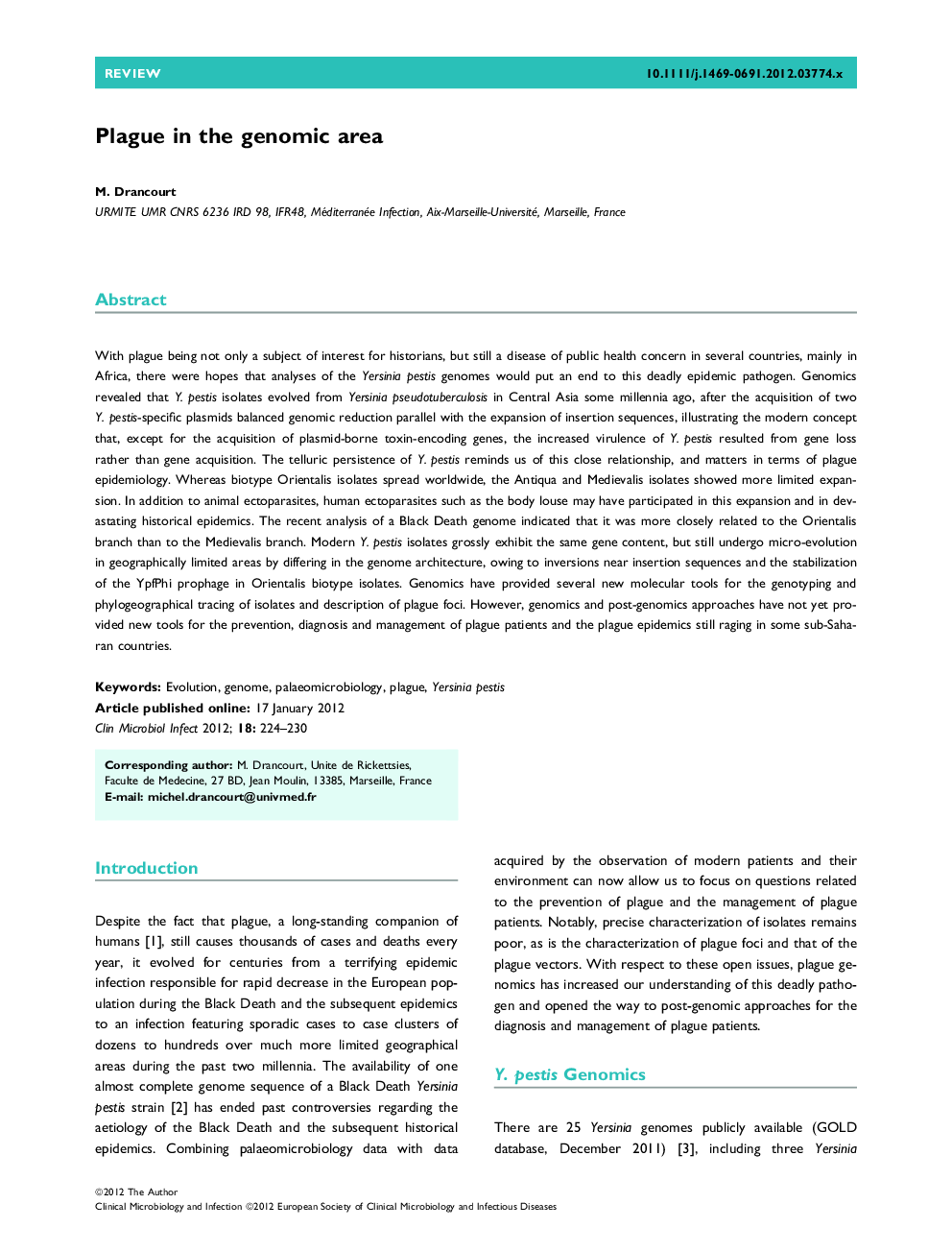| کد مقاله | کد نشریه | سال انتشار | مقاله انگلیسی | نسخه تمام متن |
|---|---|---|---|---|
| 3396981 | 1222207 | 2012 | 7 صفحه PDF | دانلود رایگان |

With plague being not only a subject of interest for historians, but still a disease of public health concern in several countries, mainly in Africa, there were hopes that analyses of the Yersinia pestis genomes would put an end to this deadly epidemic pathogen. Genomics revealed that Y. pestis isolates evolved from Yersinia pseudotuberculosis in Central Asia some millennia ago, after the acquisition of two Y. pestis-specific plasmids balanced genomic reduction parallel with the expansion of insertion sequences, illustrating the modern concept that, except for the acquisition of plasmid-borne toxin-encoding genes, the increased virulence of Y. pestis resulted from gene loss rather than gene acquisition. The telluric persistence of Y. pestis reminds us of this close relationship, and matters in terms of plague epidemiology. Whereas biotype Orientalis isolates spread worldwide, the Antiqua and Medievalis isolates showed more limited expansion. In addition to animal ectoparasites, human ectoparasites such as the body louse may have participated in this expansion and in devastating historical epidemics. The recent analysis of a Black Death genome indicated that it was more closely related to the Orientalis branch than to the Medievalis branch. Modern Y. pestis isolates grossly exhibit the same gene content, but still undergo micro-evolution in geographically limited areas by differing in the genome architecture, owing to inversions near insertion sequences and the stabilization of the YpfPhi prophage in Orientalis biotype isolates. Genomics have provided several new molecular tools for the genotyping and phylogeographical tracing of isolates and description of plague foci. However, genomics and post-genomics approaches have not yet provided new tools for the prevention, diagnosis and management of plague patients and the plague epidemics still raging in some sub-Saharan countries.
Journal: Clinical Microbiology and Infection - Volume 18, Issue 3, March 2012, Pages 224–230